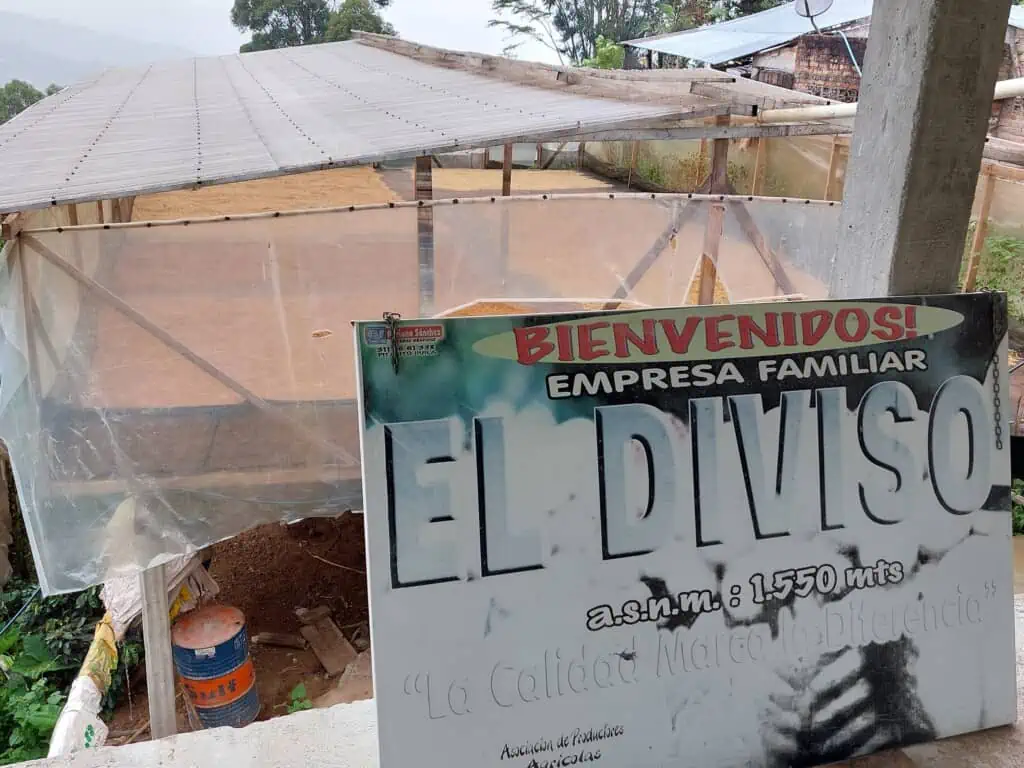
Welcome signal at Finca El Divisi in Colombia’s Huila Division. Courtesy of Chromatic Espresso.
I’ll get started with a well-recognized tale. Round 2004, a Panama espresso farmer, Value Peterson, discovered a box of espresso timber rising on his assets that was once other in look from different timber. He entered the espresso from the ones timber as a separate lot within the 2004 Absolute best of Panama inexperienced espresso pageant, and that espresso, competing because the “Geisha” number of Arabica, blew away that yr’s pageant, that yr’s coffees from every other position on the planet, and everybody who tasted it.
Espresso from this newly rediscovered selection tasted startlingly advanced and other and continues to style that means even if planted in other places, as long as the seedlings constitute the unique Geisha as rediscovered in Panama, and rising prerequisites are suitable.
This isn’t where to enter the confusion and debate that has evolved during the last decade round Geisha, from debates about easy methods to spell the title to Geishas that don’t style like Geishas. What’s essential for this record is the truth that a prior to now unrecognized number of Arabica espresso was once discovered merely rising in a Panama espresso box, and that in the past unrecognized selection went on to modify the arena of uniqueness espresso.
True, Geisha/Gesha was once therefore traced again thru Costa Rica to Kenya and Tanzania to a selected area in Ethiopia. Nonetheless, the chance stays that there may well be any other Geisha rising in any person else’s box of nameless timber, any other botanical and sensory gold mine ready to be came upon.
In all probability it’s that chance, the possible emergence of any other game-changing number of Arabica from anonymity, that has inspired consideration to a cluster of latest espresso sorts that experience popped up during the last 3 or 4 years on roaster web sites and in our critiques. Specifically, we have now heard so much about Red Bourbon, Chiroso and Sidra, all espresso sorts which are new and slightly unfamiliar to maximum advantageous espresso lovers, and all it seems that first decided on from fields in Colombia or neighboring Ecuador.
New Names and Claims
For this month’s record, we pattern a few of these slightly new sorts. Do they in fact style that other or awesome to extra acquainted sorts like Typica, Bourbon, Caturra, Castillo or Catuai, sorts that most often make up the espresso samples from Colombia and Central The usa we check at Espresso Assessment? How neatly do those more recent sorts rise up when in comparison to samples from that sensory powerhouse Geisha? What, kind of, can shoppers be expecting once they purchase a espresso from timber of such a slightly new sorts?
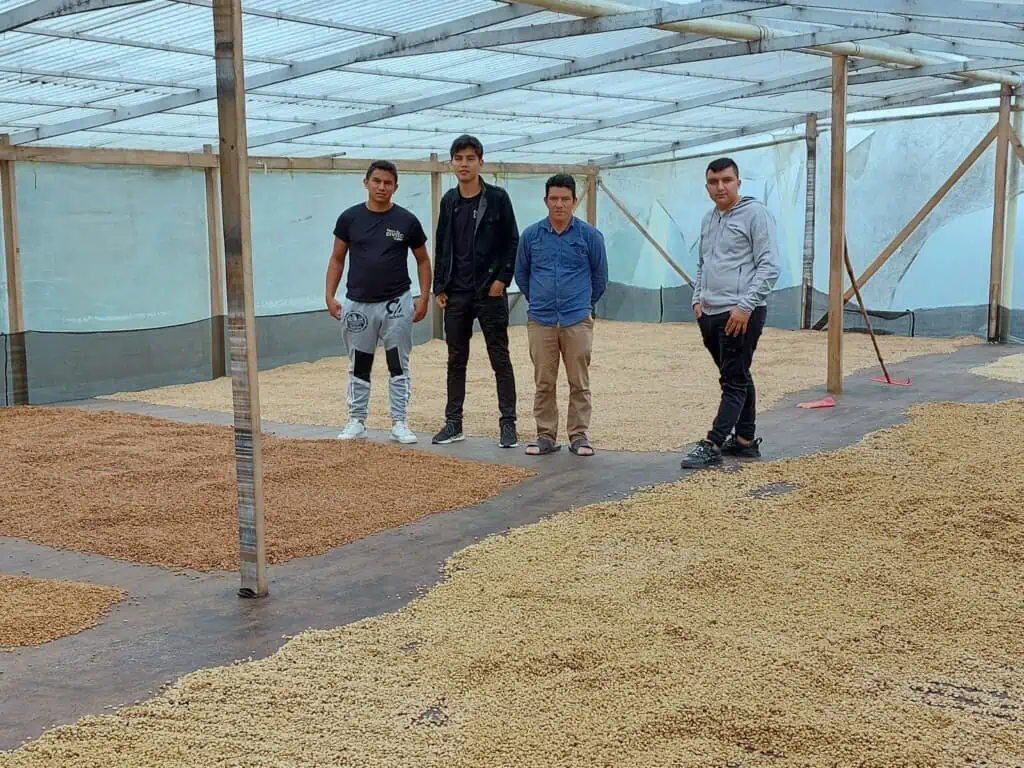
Running the coated drying beds at Finca El Diviso in Colombia. Courtesy of Chromatic Espresso.
We had been specifically desirous about tasting the ones sorts that it seems that had been decided on informally and became out to style other or thrilling sufficient for different farmers to plant them and lend a hand determine them as slightly strong sorts. All 3 have created some web buzz. Once more, they’re Sidra (also known as Sidra Bourbon), Red Bourbon (observe it’s purple Bourbon, no longer yellow or crimson), and Chiroso (also known as Chiroso Caturra). We had been in a position to supply 14 samples stated to be made from timber of those sorts.
Different Novices
We additionally examined a smattering of coffees from different sorts that don’t seem to be most often grown in Ecuador, Colombia or Central The usa, however which have been not too long ago introduced in and established on farms there. They come with the Ethiopian Wush Wush selection (a well-liked selection with 10 samples), the Kenyan SL28, and the attention-grabbing Java, a wide range first established in Java within the early nineteenth century with seed introduced without delay from Ethiopia, then delicate through geneticists in Cameroon prior to rerelease as a strong (and regularly exceptional) selection beneath the Java title within the Eighties. This month we assessment a advantageous Java grown in Colombia at Finca El Roble through Jairo Ivan Lopez and Corvus Espresso, score it at 95 for its blank, intense sweetness and its cocoa and wealthy berry notes suggesting the an identical taste advanced in some Geisha profiles.
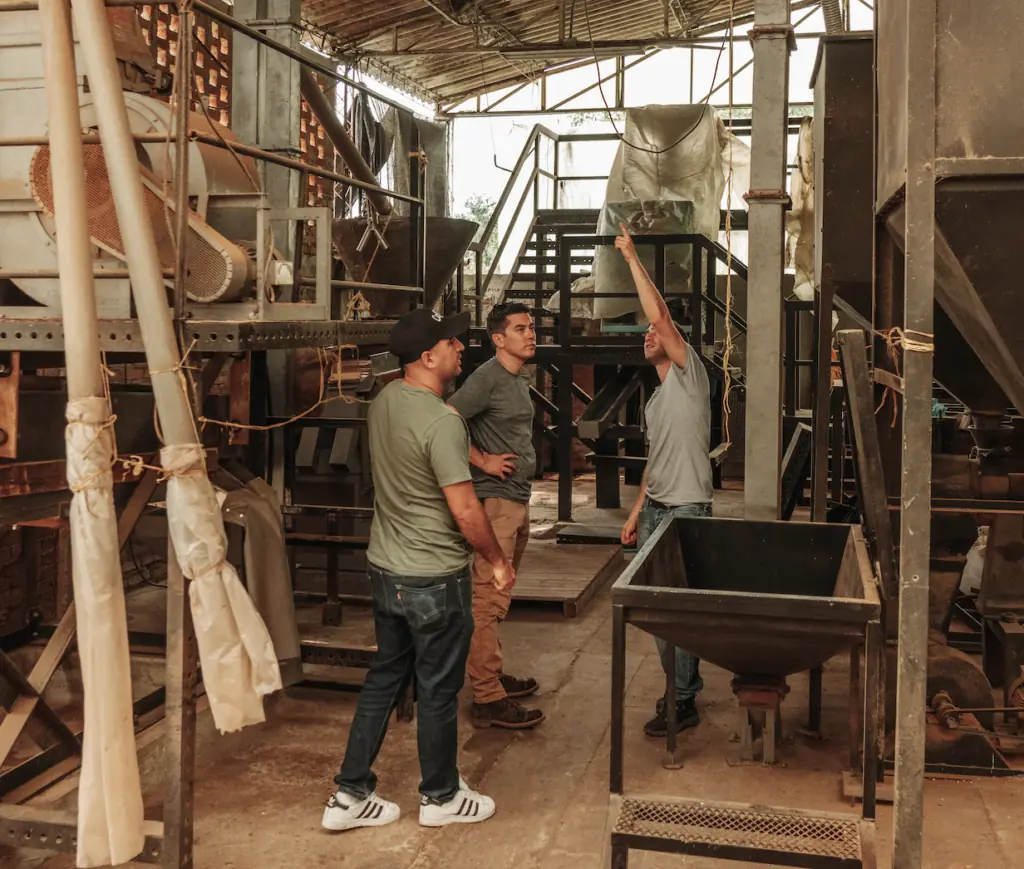
Processing espresso cherries at Finca El Roble in Colombia’s Quindio Division. Courtesy of Corvus Espresso.
We additionally examined unmarried samples from a half-dozen different sorts, together with Centroamericano and Milenio, each planned crosses between a difficult, disease-resistant hybrid (Sarchimor) and an Ethiopia selection admired for its unique cup personality (Sudan Rume). The objective with such F-1 crosses, as they’re referred to as, is to provide a wide range tough sufficient to rise up to the tension of local weather exchange whilst handing over the sensory complexity of excellent Ethiopia coffees. In different phrases, a win-win. Centroamericano and Milenio had been a part of the primary wave of F1 hybrid sorts created through a consortium together with French analysis institute CIRAD, a regional community of nationwide espresso institutes in Central The usa (PROMECAFE), and the tropical agricultural analysis and better schooling heart CATIE. F1 hybrid sorts are nonetheless slightly new in espresso agriculture. Just a handful have develop into commercially to be had to farmers prior to now 15 years, together with the Milenio reviewed right here, produced through the Las Lajas micro-mill in Costa Rica and reviewed at 92 as sourced and roasted through Seattle’s Fulcrum Espresso Roasters.
Processing Hijinks Make Analysis Difficult
Of the 3 rising sorts we specifically center of attention on, Red Bourbon has attracted essentially the most web reward. Chiroso and Sidra even have gained excellent press, however no longer as a lot of it.
Our sampling of roasted coffees produced through those 3 newly publicized sorts was once slightly modest in quantity (a complete of 15). And comparing their doable within the cup was once sophisticated through the truth that a few of these samples had been processed through experimental anaerobic processing strategies intentionally designed to accentuate their complexity and difference.
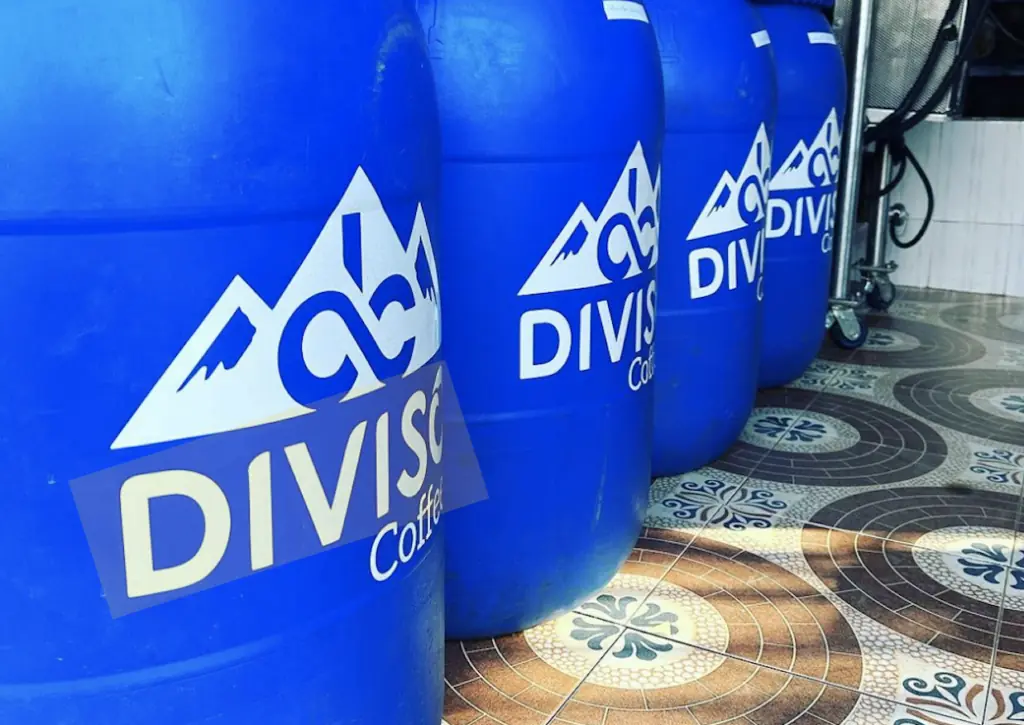
Fermentation barrels at Finca El Diviso the place many anaerobic coffees are processed. Courtesy of Chromatic Espresso.
So, it’s tough to inform how a lot of the wonder and pleasure displayed through a few of these samples comes from the brand new, unfamiliar tree selection and what sort of from the applying of creative new processing strategies. Alternatively, I in my view have concluded that the regularly pleasurable complexity and juicy construction of the most productive of those samples are basically related to their innate personality. In different phrases, in my view (mine on my own), the processing wrinkles can have intensified complexity and depth, however the most productive of those samples had been intrinsically spectacular.
The New Selection Scorecard
Of the sorts we examined and inquisitive about, Sidra significantly surpassed the others in reasonable scores, together with each the Ethiopian Wush Wush and the much-admired Red Bourbon and Chiroso. Given the relative few samples of every selection, alternatively, it will simply be the success of the Sidra. Keep in mind that we cup our samples blind; we don’t have any thought of the identification of a pattern in this day and age we cup it.
- Sidra, seven samples, reasonable score 93, top 95 low 91
- Chiroso, 5 samples, reasonable score 89, top 94 low 84
- Red Bourbon, 3 samples, reasonable score 90, top 92 low 89
- (For common comparability, Wush Wush 10 samples, reasonable score 88, top 93 low 81)
3 of the Sidra samples specifically — the top-rated Chromatic Espresso Colombia Finca El Diviso, the Euphora Espresso Ecuador Sidra, and the Kakalove Colombia Las Flores Sidra, all rated 95 — had been specifically spectacular, and all slightly other, even though alike of their exciting floral and fruit intricacy and complicated, nuanced layering of foundational tastes. The Chromatic Finca El Diviso is jammier, deeper, extra fruit- and chocolate-toned than the others. The Euphora Ecuador Sidra may be deep, however floral, with a specifically thrilling vivid acidity that shimmers on the center of the profile. The Kakalove Las Flores Sidra is somewhat quieter, extra balanced and entire than the others, with a feature Geisha-style layering of plant life and cocoa.
Typica-Bourbon Hybrids? Nope
Essentially the most prevalent cause of why those 3 sorts are sudden and remarkable within the cup runs alongside those traces: They’re advanced and thrilling as a result of they’re spontaneous hybrids of Bourbon and Typica and so they include the most productive of either one of those sorts. Some web accounts specifically emphasize the “higher as a result of they’re each” argument.
The delight New Global farmers should soak up celebrating the particular virtues of latest sorts that appear to brilliantly fuse the nature of the 2 basic pillars of Latin American espresso, Typica and Bourbon, is comprehensible.
Alternatively, if genetic proof is to be believed (and what else would possibly we imagine?), we’re having a look at 3 extra examples of “Ethiopian escapees.” In different phrases, 3 extra variations of the Geisha tale. In step with Christophe Montagnon, main tropical agriculture geneticist and head of espresso genetics analysis company RD2 Imaginative and prescient, Sidra, Red Bourbon and Chiroso all haven’t any courting in any respect to both Bourbon or Typica. They’re a part of a “Core Ethiopia” genetic team, consisting of Ethiopian “landrace” sorts decided on for excellent efficiency through farmers.
Which farmers, and the place did they do this settling on? The timber don’t seem to be telling, and up to now, no person has been in a position to track any of those 3 sorts again thru historical past, as was once imaginable with Geisha/Gesha. So, we have now the unraveling of this thriller to sit up for. However anyplace the choice came about, possibly farmers or their technical advisors did the choosing, so I say ranking one for the espresso grassroots.
Two Extra Types: Chiroso, SL28
We assessment one Chiroso from Taiwan roaster at 94, the GK Espresso Colombia El Roble Chiroso Washed, which inspired with its delicacy, the best way its plant life edged towards herb, exhibiting an engagingly contemporary, gardeny personality. The best possible rated espresso on this month’s record no longer grown from Ethiopian-related plant subject material is the 94-point Equator Espresso Guatemala El Injerto SL28, during which the stinky, resinous observe feature of the good Kenya SL28 selection sweetens and rounds superbly in a mango and lavender route.
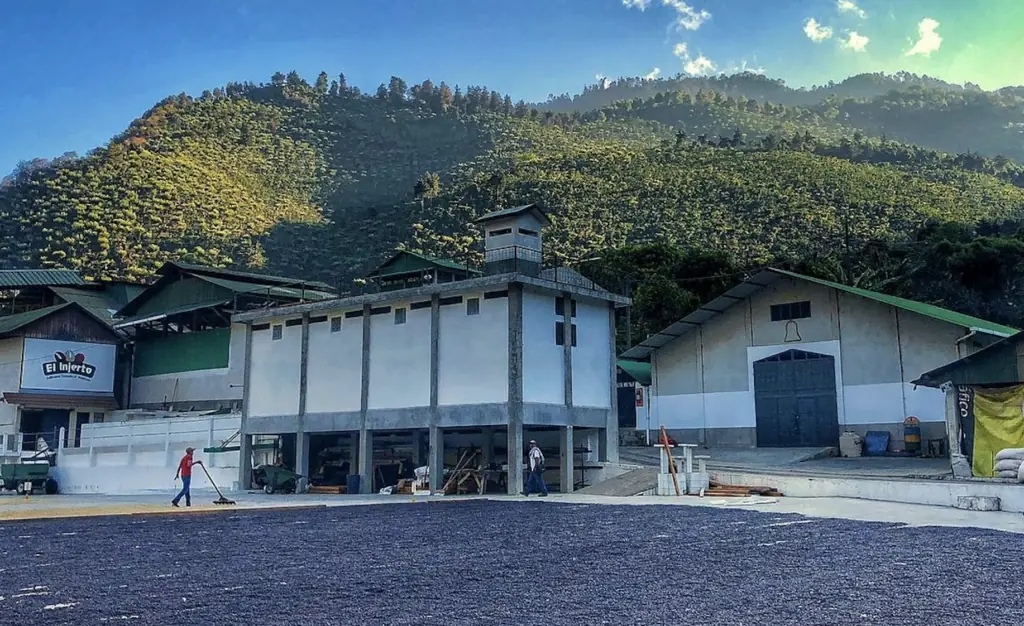
Coffees drying at Finca El Injerto in Guatemala’s Huehuetenango Division. Courtesy of Equator Espresso.
Thank you and a Deeper Dive on Espresso Selection
Particular because of Miguel Meza of Paradise Roasters and Christophe Montagnon of RD2 Imaginative and prescient for his or her beneficiant recommendation in this record.
Senior Editor Kim Westerman and Affiliate Editor Jason Sarley co-cupped all samples and contributed to check language and scores.
For extra on espresso selection, I like to recommend the next sources:
Chris Kornman, Day-to-day Espresso Information, “The Espresso Roaster’s Whole Information to Espresso Types and Cultivars”. Lucid and thorough.
Christophe Montagnon, “Arabica Espresso Cultivars Wheel” and related fabrics . Authoritative and scholarly.
Global Espresso Analysis’s “Espresso Types Catalog”. Meticulous and simple to get entry to.
Or the ones muscular readers no longer fearful of heavy books can seek the advice of the sorts bankruptcy in my not too long ago revealed quantity 21st Century Espresso: A Information.

Leave a Reply